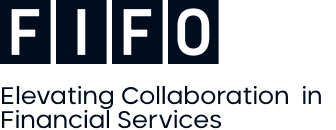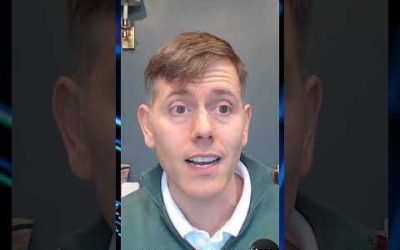by Louis Navellier
February 19, 2025
The impact of Germany’s upcoming election on February 23rd is expected to be monumental. The AfD Party wants to: (1) restart nuclear plants, (2) curtail immigration and (3) cut taxes. This alarms the other political parties in Germany. As a result, the Christian Democratic Party (CDP) has made an alliance with the Bavarian Christian Social Union (CDU). Combined, they expect to eke out a small victory over the AfD Party. However, since AfD continues to rise in the polls, it is possible that the AfD could receive a higher percentage of the votes. Since the CDP/CDU alliance and all other political parties have vowed to avoid any ruling coalition government with the AfD Party, Germany could become like France and be totally dysfunctional with a weak Chancellor that does not have the full support of a substantial voting bloc in the Bundestag. Frankly, there is a simple solution, namely for the political elites to accept the AfD Party, since they are anticipated to have the largest voting bloc of any German political party.
I should add that our allies in Europe have not been very happy with Trump 2.0, nor with the recent visit by Vice President J.D. Vance, who blasted Europe’s “excessive” regulations at the Paris AI Summit. Vance also thanked our allies for their tiny 2% commitment to NATO, but then he told them that they must contribute more moving forward. Europeans are also complaining that President Trump talked to Vladimir Putin without consulting them, our European allies, especially Britain, which made a 100-year partnership commitment to Ukraine. Europe is also upset about President Trump’s reciprocal tariffs that will be implemented by incoming Commerce Secretary Howard Lutnick. The fact that President Trump wants to onshore a lot of manufacturing from our allies if they do not lower their tariffs to U.S. levels is making many countries extremely nervous. Frankly, all these complaints by the European Union (EU) will likely be ignored by the Trump Administration and potentially result in a slow decline of the EU.
At the Munich Security Conference on Friday, Vice President J.D. Vance lectured the European audience further, about suppressing democracy and the voices of many European citizens. Vance was also critical of the Biden Administration’s efforts to suppress news in the U.S., citing Covid-19 origin misinformation as an example. However, the most shocking moment was J.D. Vance’s direct criticism of Britain and Germany suppressing social media, as well as rising political movements. I am sure that Germany’s AfD Party was ecstatic with J.D. Vance’s speech since, despite its surging popularity, the mainstream German political parties have openly declared they would refuse to work with the AfD Party, even if they won.
Finally, President Trump scheduled a 90-minute phone call with Russian President Vladimir Putin. This is the first time the U.S. has talked with Putin since their invasion of Ukraine three years ago this week. This promise of a thaw in U.S./Russian relations is a good sign, as was the Russian hostage release of Marc Fogel and the U.S. release of Alexander Vinnik (an accused cryptocurrency money launderer).
Russia is also supposed to release another U.S. hostage in Belarus. After the phone call with Vladimir Putin, the White House said that the negotiations on ending the war with Ukraine will begin “immediately.” Trump and Putin agreed to meet first in Saudi Arabia. Furthermore, Putin agreed to come to the U.S. and Trump agreed to visit Russia. So, not only are negotiations underway to end the war in Ukraine, but the relationship between the U.S. and Russia is apparently thawing at a very fast pace.
At the same time, the trade war between China and the U.S. is heating up. Specifically, China imposed retaliatory tariffs of 10% to 15% on $14 billion of U.S. goods. China said this was in response to the new tariffs the Trump Administration imposed on China. President Trump announced on Air Force One last week that he will impose 25% tariffs on all imports of aluminum and steel, including those from Canada and Mexico, effective on March 12th. Since making aluminum and steel is energy intensive, countries with cheap electricity, like Canada, with abundant hydroelectric power, naturally have an edge.
These new 25% tariffs are expected to help U.S. steel companies the most, since aluminum production will most likely remain in Canada, but a lot can happen to change these dynamics before March 12th.
Inflation Returns in the Major January Indexes
Last Wednesday, the Labor Department announced that the Consumer Price Index (CPI) rose by a higher-than-expected 0.5% in January (vs. an expected 0.3% increase) and rising 3% in the past 12 months. The core CPI, excluding food and energy, rose 0.4% in January and 3.3% in the past 12 months. Food prices rose 0.4% in January, while energy prices rose 1.1%. Shelter costs rose 0.4% in January and still remain stubbornly high. Treasury yields rose in anticipation that the Fed will not cut key rates anytime soon.
Egg prices surged 15.2% in the CPI in January due to avian flu, accounting for much of the increase in the food price component. Beef prices have also exerted upward pressure, since cattle herds are now at their lowest level in 73 years. Since chicken was supposedly a healthier and lower-cost substitute for beef, the prices for boiler chickens have steadily risen over the last year. If you are worried about high egg prices, please remember that we have been recommending Cal-Maine Foods (CALM) and Vital Farms (VITL).
The next day, on Thursday, the Labor Department announced that the Producer Price Index (PPI) rose by 0.4% in January (vs. an expected 0.3% increase) and 3.5% in the past 12 months. The core PPI, excluding food and energy, rose 0.3% in January and 3.6% in the past 12 months. Wholesale food prices rose 1.1% in January due largely to a 44% increase in egg prices from the bird flu, while energy prices surged 1.7%.
The good news is that the components of the personal consumption expenditure (PCE) price index were relatively tame, so the PCE announcement later this month should not come in too hot. Wholesale service costs rose 0.3%, while wholesale goods costs rose 0.6%. Excluding food and energy, wholesale goods costs rose only 0.1%, so a strong dollar seems to be suppressing inflationary pressures. Treasury yields declined on the PPI report due to green shoots on PCE components and low core wholesale goods gains.
Bond yields fell further after a disappointing retail sales report. Specifically, the Commerce Department announced that retail sales declined by 0.9% in January, which was shocking since economists were expecting a smaller 0.1% drop. The good news was that December retail sales were revised higher to a 0.7% increase, up from 0.4% previously reported. Severe winter weather as well as the fires in Los Angeles curtailed January’s retail sales. For example, on-line sales declined 1.9% in January, since it is hard to make deliveries through deep snow or fire evacuations. Sporting goods sales declined 4.6% in January, while auto sales slipped 2.8%. The good news was that sales at bars and restaurants rose 0.9%.
Fed Chairman Jerome Powell testified before Congress last week and made it clear that the Fed was in no hurry to cut key interest rates. The Fed Chairman also dodged most of the harder questions, like why the Fed has removed its 2% inflation target in its latest Federal Open Market Committee (FOMC) statement.
Powell has now lost control of the FOMC due to recent split votes on key interest rate changes. President Trump will likely appoint a new Fed Chairman when Powell’s term expires on May 15, 2026. I believe Minneapolis President Neel Kashkari has the inside line on being the next Fed Chairman. After the January payroll report, he said, “I would expect the Fed funds rate to be modestly lower at the end of this year.” Naturally, Kashkari’s comment is exactly what President Trump wants to hear from Fed officials. As I mentioned in my MarketWatch opinion piece, I think Kashkari would be our best pick to lead the Fed, starting in May of next year.
The truth of the matter is that we are still in the early innings of a global interest rate collapse in Asia and Europe: In Asia, China’s long-term bond yields fell below Japan’s a while ago. It appears that is due to Japan’s (1) demographic problems causing its population to shrink, (2) its domestic real estate crisis and (3) lackluster economic growth, as well as deflationary forces, China is now becoming the “new Japan” and its key interest rates are expected to be at, or near, zero in the upcoming months and stay there for possibly two decades or more.
The largest economies in Europe – namely those of Britain, France and Germany – are in the midst of a growing political crisis that has resulted in each country slipping into a recession. As a result, I expect that the Bank of England and the European Central Bank will continue to cut key interest rates at least 3 or 4 more times this year, which should cause government debt yields to steadily decline, including U.S. Treasury yields.
Elon Musk and his DOGE team have been exposing government waste, and more exposure is anticipated as their efforts spread to the Department of Education and Department of Defense. Naturally, Musk’s efforts are fueling a massive backlash as well as a Federal Court injunction. However, the Trump Administration and Musk know how to “turn up the volume” and dominate the news cycle to overload a news media that is increasingly finding it hard to defend the growing evidence of government waste.
The Treasury bond market is watching DOGE carefully, but when all the savings are added up, the Trump Administration is expected to pass all the DOGE savings onto taxpayers, and once the tariffs are finalized, that revenue is also expected to reduce taxes. President Trump announced reciprocal tariffs against the European Union (EU) and other countries that will be implemented 180 days after incoming Commerce Secretary Howard Lutnick suggests the appropriate remedies. Trump 2.0 remains in “warp speed” mode.
Navellier & Associates owns Vital Farms, Inc. (VITL), and Cal-Maine Foods, Inc. (CALM), in managed accounts. Louis Navellier and his family own Vital Farms, Inc. (VITL), and Cal-Maine Foods, Inc. (CALM), via a Navellier managed account.
The post 2-19-25: Europe Fears a Revolution – In German Elections and Trump’s Tariffs appeared first on Navellier.






